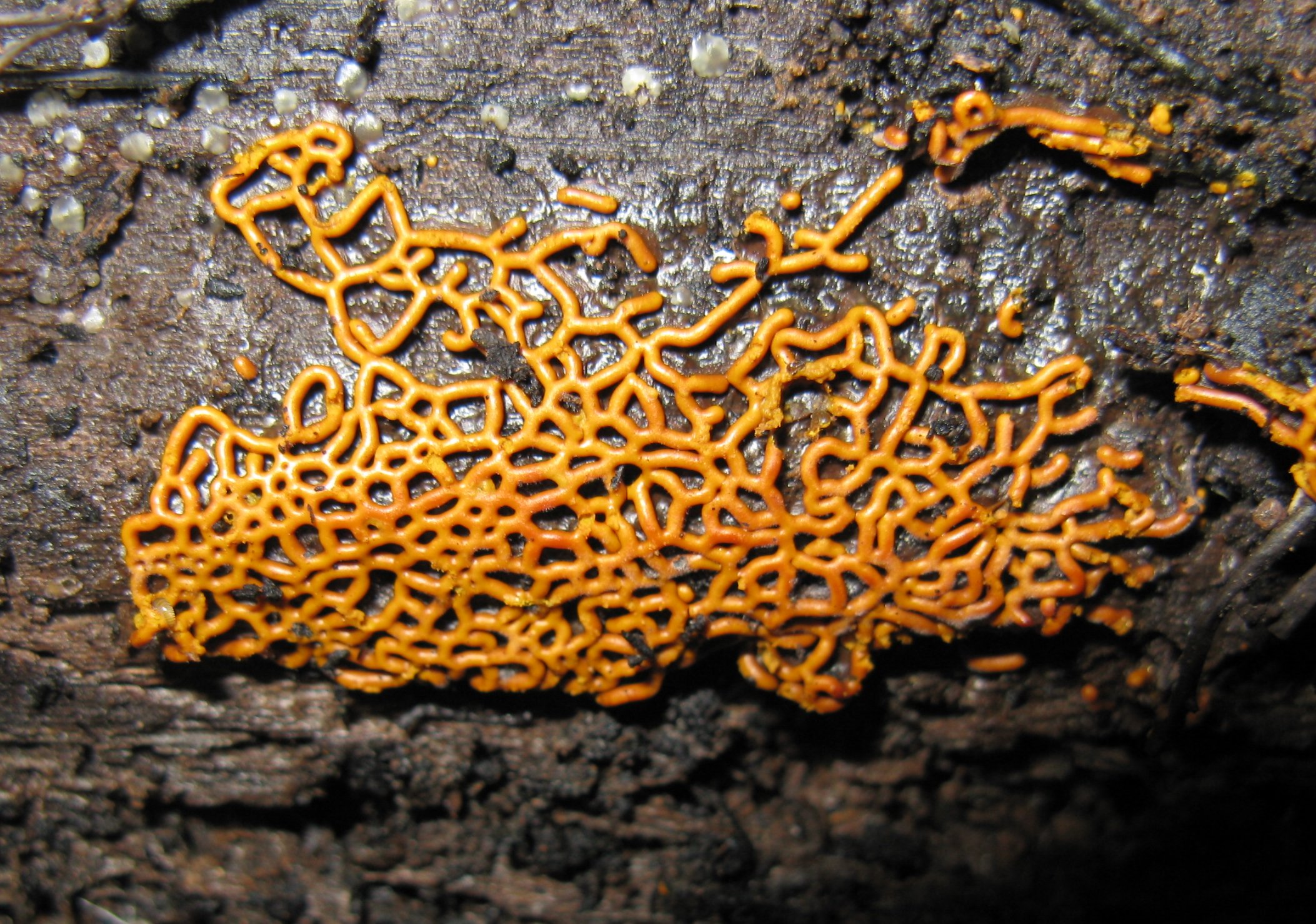Plasmodiocarp on:
[Wikipedia]
[Google]
[Amazon]
 A plasmodiocarp is a special form of
A plasmodiocarp is a special form of
 A plasmodiocarp is a special form of
A plasmodiocarp is a special form of fruit bodies
The sporocarp (also known as fruiting body, fruit body or fruitbody) of fungi is a multicellular structure on which spore-producing structures, such as basidia or asci, are borne. The fruitbody is part of the sexual phase of a fungal life cyc ...
of slime mould
Slime mold or slime mould is an informal name given to several kinds of unrelated eukaryotic organisms with a life cycle that includes a free-living single-celled stage and the formation of spores. Spores are often produced in macroscopic mu ...
s. It is produced if the plasmodium
''Plasmodium'' is a genus of unicellular eukaryotes that are obligate parasites of vertebrates and insects. The life cycles of ''Plasmodium'' species involve development in a blood-feeding insect host which then injects parasites into a vert ...
concentrates during the fructification
Fructification () are the generative parts of the plant (flower and fruit) (as opposed to its vegetative parts: trunk, roots and leaves). Sometimes it is applied more broadly to the generative parts of gymnosperms, ferns, horsetails, and lycophyt ...
and pull back into the venetion of the plasmodium, from which the fruit body is created. The fruit body traces the process of the venetion, whereby the structure of its subsurface becomes plainly strand-shaped, branched, net or ring-shaped. The production of plasmodiocarps can be generic, or can be also caused by the deranged development of sporocarps or aethalia.
Slime moulds with plasmodiocarps including ''Physarum aeneum
''Physarum aeneum'' is a slime mould species from the order Physarida. It is one of a few slime moulds mainly common in the tropics and subtropics.
Characteristics
The plasmodium of ''Physarum aeneum'' is black. The plasmodiocarps' fruit bodie ...
'', ''Physarum bivalve
''Physarum'' is a genus of mycetozoan slime molds in the family Physaraceae.
It contains the following species:
*''Physarum albescens''
*'' Physarum album''
*'' Physarum andinum''
*'' Physarum bivalve''
*'' Physarum bogoriense''
*''Physarum ci ...
'', ''Physarum lateritium
''Physarum'' is a genus of mycetozoan slime molds in the family Physaraceae.
It contains the following species:
*''Physarum albescens''
*'' Physarum album''
*'' Physarum andinum''
*'' Physarum bivalve''
*'' Physarum bogoriense''
*''Physarum ci ...
'', ''Diderma effusum
''Diderma effusum'' is a species of slime mould in the family Didymiaceae, first described by Lewis David de Schweinitz in 1832 as ''Physarum effusum'', and transferred to the genus, ''Diderma'', in 1894 by Andrew Price Morgan. It is found throu ...
'', '' Physarella oblonga'', ''Willkommlangea reticulata
''Willkommlangea reticulata'' is a slime mold species from the order Physarales and the only species of the genus ''Willkommlangea''. It is common worldwide, but rare in Europe. The tropics are possibly the main area of habitat.
Characteristics
...
'' or ''Hemitrichia serpula
''Hemitrichia'' is a genus of slime molds, of the family Trichiidae, found within the order Trichiida. It was first described by Josef Rostafinksi in 1873 and remains a well-defined genus of the slime molds. ''Hemitrichia'' species exhibit either ...
''.Steven L Stephenson; Stempen, Henry, ''Myxomycetes : a handbook of slime molds'', Timber Press, section 7 to 10
References
{{reflist Plant morphology